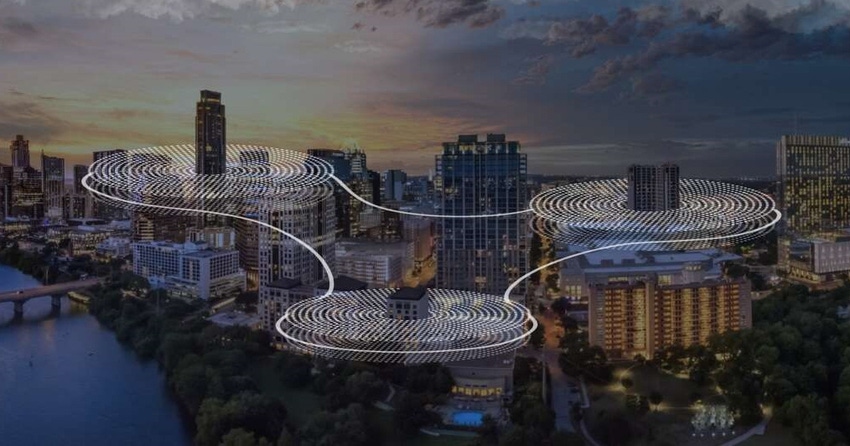Swedish kit maker Ericsson will develop Open RAN solutions that run on AMD processors as well as Intel ones.
April 27, 2023

Swedish kit maker Ericsson will develop Open RAN solutions that run on AMD processors as well as Intel ones.
With the telecoms industry pursuing software-based, vendor-agnostic network architecture, more attention than ever is being paid to the underlying silicon – not only its performance, but who makes it. And in the case of open and cloud RAN, the most common answer to the latter point is Intel, raising the question of whether operators are merely swapping one flavour of vendor lock-in for another.
Ericsson’s announcement on Thursday is significant then, because partnering with one of Intel’s biggest rivals in AMD has the potential to maintain competition in the Open RAN chip market.
Under the partnership, Ericsson will explore the use of AMD’s EPYC server processors and T2 Accelerator cards for its Open RAN solutions. The ultimate aim is to position Ericsson’s Open RAN products to work on multiple silicon platforms. AMD and Ericsson will also investigate how future iterations of their respective products might work together.
“Our work with AMD is a great example of our efforts to expand our support and add more choices for our customers looking to advance their cloud RAN and Open RAN journey,” said Freddie Södergren, head of technology and strategy at Ericsson’s networks business. “Adding this technical partner furthers our commitment to enable Ericsson Cloud RAN to run on multiple platforms, delivering a truly cloud-agnostic platform that provides the highest performance required for delivering 5G connectivity and beyond.”
Kumaran Siva, AMD’s corporate vice president of strategic business development, said the partnership “delivers on our joint customers’ demands for increased choice of processing and accelerator technologies.”
The AMD partnership was just one of three Open RAN-related announcements shared by Ericsson on Thursday.
The kit maker also announced that Dell’s PowerEdge servers will be added to the Ericsson Cloud RAN portfolio. The deal covers the PowerEdge XR8000 and XR5610, which are designed specifically for telco, Open RAN and mobile edge computing (MEC) workloads. Adding them to its portfolio gives Ericsson an opportunity to protect its top line amid the rise of Open RAN, and it gives Dell a potentially lucrative new sales channel.
“To accelerate the adoption of open and cloud RAN network architectures, it’s important to collaborate with partners such as Ericsson,” said a statement from Kyle Dufresne, global SVP and GM, OEM solutions at Dell. “With Dell PowerEdge servers supporting Ericsson’s Cloud RAN solution, network operators have the option of using the world’s leading server platform to realize the value of open technologies, and quickly bring innovative and revenue generating solutions to market.”
Finally, Ericsson also announced two new O-RAN Alliance-compatible RAN automation applications (rApps) designed to address energy efficiency. Power consumption is a hot topic in telecoms at the moment, particularly when it comes to Open RAN and whether multi-vendor solutions running on general purpose processors (GPPs) can be as energy efficient as proprietary equivalents while still delivering the required network performance.
Ericsson’s RAN Energy Cockpit app monitors the energy performance of every radio unit in the network, giving operators a detailed picture of consumption. It can also identify and isolate causes of inefficiencies and recommend solutions to any problems that are uncovered.
It’s other rApp, RAN Energy Control, uses artificial intelligence and machine learning to autonomously determine which radio power-saving features per radio unit should be activated or deactivated every 15 minutes across the whole network. It is able to account for network traffic levels in order to maintain consistent network performance. Ericsson claims it can the reduce daily radio network energy consumption by up to 25 percent without impacting the user experience.
“Continuous innovation is important to ensure performance and impeccable user experience,” said Södergren, in a separate statement. “The new rApps are a significant step forward in supporting our customers with any network of their choice and building resilient, open, sustainable, and intelligent networks of the future.”
Get the latest news straight to your inbox. Register for the Telecoms.com newsletter here.
About the Author(s)
You May Also Like








.png?width=300&auto=webp&quality=80&disable=upscale)


_1.jpg?width=300&auto=webp&quality=80&disable=upscale)


.png?width=800&auto=webp&quality=80&disable=upscale)